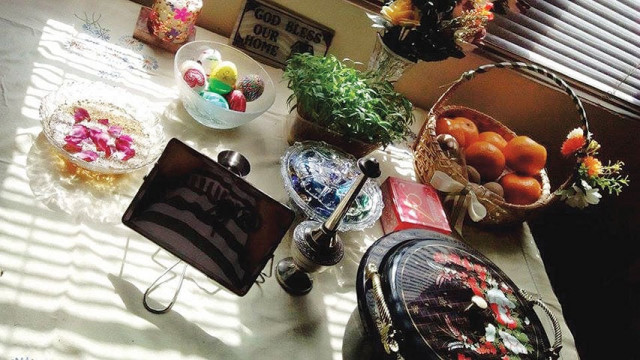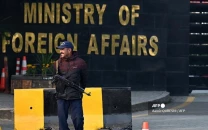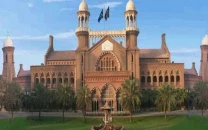Navroze: Yesterday and today
A student reminisces how Navroze was celebrated when she was young

As part of the Navroze festivities rosewater is sprinkled on guests and a mirror is held up for them to see their smiling faces. PHOTO: SHARMEEN GARSHASBI
Navroze was never an exclusive celebration for Zoroastrians. Non-Zoroastrian students would also be part of the festivities and came along to observe the decorated table. Each student would then be ushered into the room by four girls bearing a tiny container filled with vermilion to apply tili to the forehead, a rosewater sprinkler, a mirror and a basket filled with sweets, chanting “Avo ji” (please come in). This would continue throughout the course of the day.
Now that I’ve graduated from school, however, as a teenager I look forward to the celebrating Navroze at home with my family and later with friends. On the eve of the festival we attend a dance party and dinner that is organised by community members. It is a way for everyone to get together and celebrate Navroze as a single unit. In the mornings, my mother prepares a breakfast of traditional vermicelli and ravo (semolina and milk pudding) which sets the pleasant tone for the rest of the day. After breakfast, we put garlands on the frames of the deceased and light a diya in the house. The rest of the morning is spent tapping our feet to rhythm of Gujrati classics played by older women in the neighbourhood. At lunch we fill our stomachs with dhandaar patio and mutton pulao and later shower and wear clean clothes to visit the temple and pray for a prosperous year. Finally we visit our grandparents who shower us with affection and ‘navrozi’ (money).
Khursheed Gamwalla is an aspiring textile designer who is currently studying at the Indus Valley School of Art and Architecture.



















COMMENTS
Comments are moderated and generally will be posted if they are on-topic and not abusive.
For more information, please see our Comments FAQ